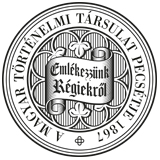Századok – 2021
2021 / 2. szám - VIDÉKI TÁRSADALOM ÉS PERCEPCIÓI A 18-20. SZÁZADBAN - Demeter Gábor - Szilágyi Adrienn - Túri Zoltán: Földminőség, nemesi érdekérvényesítés, jövedelmezőség a Tiszántúl déli részén a 18-19. században
FÖLDMINŐSÉG, NEMESI ÉRDEKÉRVÉNYESÍTÉS, JÖVEDELMEZŐSÉG A TISZÁNTÚL DÉLI RÉSZÉN 11. táblázat A különböző talajtípusokon lévő települések egy holdra és egy birtokra jutó jövedelmi viszonyainak differenciái, valamint az átlagos birtokméret és a talajtípus összefüggései 1910-ben Földminőség (települések) Összes jövedelem K/kat. hold Erdő jövedelem K/kat. hold Szőlőjövedelem K/kat. hold Szántójövedelem K/kat. hold Legelőj övedelem K/kat. hold Rétj övedelem K/kat. hold Összjövedelem / birtok Átlagos birtokméret (holdban) agyagos V (3) 12,41 3,80 16,87 14,26 2,85 6,16 243,49 18 homok IV (3) 20,56 8,47 23,17 20,61 9,21 12,04 128,93 6 korhany III (4) 11,83 7,27 15,17 13,30 5,03 11,13 203,13 17 korhany és szikes (4) 10,06 8,44 13,34 11,44 3,10 7,21 133,14 13,5 lösz (34) 16,85 5,44 21,34 17,33 7,25 8,29 5828,85 295 lösz és szikes (2) 19,19 9,63 22,82 22,17 7,95 9,40 329,68 19 szikes II (21) 11,95 6,16 18,85 13,50 4,35 6,20 315,00 24 szikes és lösz I és II (14) 23,26 6,26 17,51 18,15 4,96 7,56 161,16 9,5 Összesen: 85 16,09 6,25 19,23 16,10 5,74 7,68 2405,99 125 Forrás: Saját számítás az 1858-as talaj térkép és Békés / Csanád / Arad vármegye adóközségeinek területe és kataszteri tisztajövedelme mívelési áganként és osztályonként az 1909. évi V. t.-c. alapján. Bp. 1914. (Az átlag feletti, illetve a törzsszövegben magyarázott értékek holddal, a szövegben elemzett átlag alatti értékek kurzívval kiemelve.) QUALITY OF SOIL, ENFORCEMENT OF NOBLE INTERESTS, AND PROFITABILITY IN SOUTH-EASTERN HUNGARY IN THE 18TH AND 19TH CENTURIES By Gábor Demeter — Adrienn Szilágyi — Zoltán Túri SUMMARY One of the longest disputed questions of Hungarian agrarian history is whether there was any difference in quality after 1848 between the lands allotted to the peasants and those retained by the nobility. Following in the footsteps of Scott M. Eddie, the other question analysed in the paper is whether the nobility, having lost their tax exemption in 1848, made any attempt at manipulating the profitabilty of their lands during the cadastral registrations (1851-1865), when the revenue from the land became the basis of 8the land tax, attempting to reduce the value of the tax to be paid. These two questions lead up to a third, more complex one, namely the productivity of smallscale vs. large-sclae (grain) production, another debated problem in Hungarian historiography. An effort to answer these questions can be facilitated by an immediate collation of the tax basis (that is, the net revenue from the land) with the quality of the soil. Resorting to the help of the natural sciences, the authors have accordingly compared, along a set of criteria, the first (and only contemporary) Hungarian soil map (1858) with the net cadastral revenues of 1865 and 1911 on the localisable great and small estates in the counties of Békés, Arad, and Csanád. 316
